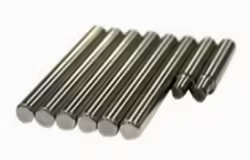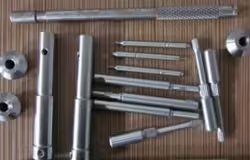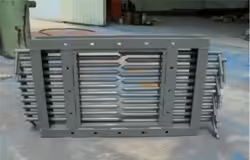
1018 vs 4140 Steel: A Complete Comparison
Steel selection plays a critical role in manufacturing, machining, and design. Among numerous grades, 1018 steel and 4140 steel stand out as two popular choices for engineers and manufacturers.
While both belong to the carbon and alloy steel families, their performance, cost, and applications vary significantly — even from the steel billet stage.
This article explores everything you need to know about 1018 vs 4140 steel, including composition, mechanical properties, heat treatment, and real-world use cases.
Table of Contents
Overview: Understanding 1018 vs 4140 Steel
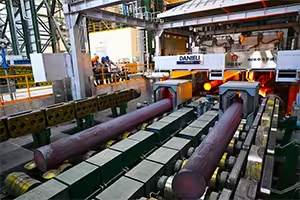
1018 Steel: Mild Carbon Steel
1018 steel is a low-carbon steel known for:
- Excellent weldability and machinability
- Smooth surface finish
- Consistent mechanical performance
It’s widely used in shafts, fasteners, and general engineering components where moderate strength is sufficient.
4140 Steel: Chromium-Molybdenum Alloy Steel
4140 steel (also called chromoly steel) contains chromium (Cr) and molybdenum (Mo), giving it:
- High strength and toughness
- Good wear resistance
- Superior heat treatment response
It’s a preferred material for heavy-duty components like gears, crankshafts, and high-stress machine parts.
Chemical Composition and Steel Billet Characteristics
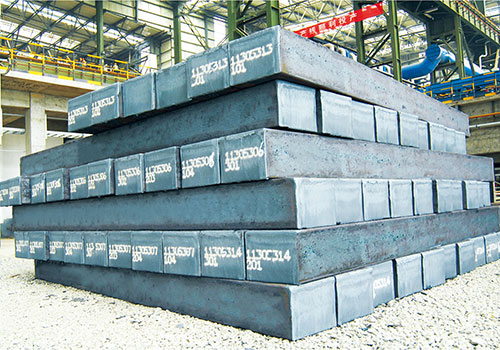
Understanding the elements that make up each steel helps explain their distinct behaviors.
Elemental Breakdown
| Element | 1018 Steel (%) | 4140 Steel (%) | Role of the Element |
|---|---|---|---|
| Carbon (C) | 0.15–0.20 | 0.38–0.43 | Increases strength and hardness |
| Manganese (Mn) | 0.60–0.90 | 0.75–1.00 | Improves toughness and hardenability |
| Phosphorus (P) | ≤0.04 | ≤0.035 | Increases machinability but reduces ductility |
| Sulfur (S) | ≤0.05 | ≤0.04 | Enhances machinability |
| Chromium (Cr) | — | 0.80–1.10 | Boosts wear and corrosion resistance |
| Molybdenum (Mo) | — | 0.15–0.25 | Enhances high-temperature strength and toughness |
Steel Billet Formation and Quality
Both steels are produced as billets before rolling or forging:
- 1018 billets are often made via continuous casting, offering high consistency and low cost.
- 4140 billets are typically electric furnace melted and refined (LF/VD) for precise element control.
High-quality steel billets must be:
- Chemically homogeneous
- Free from segregation, cracks, and internal porosity
- Properly heated during rolling to prevent grain coarsening
👉 In short, the steel billet quality largely determines the final strength, toughness, and machinability of 1018 and 4140 steels.
Mechanical Properties: 1018 vs 4140 Steel Strength and Hardness
| Property | 1018 Steel | 4140 Steel (Normalized / Quenched & Tempered) |
|---|---|---|
| Tensile Strength | ~440 MPa | 655–1080 MPa |
| Yield Strength | ~370 MPa | 415–950 MPa |
| Hardness (HB) | 120–140 | 200–300 |
| Elongation | High (good ductility) | Moderate |
| Impact Toughness | Excellent | Medium to good |
Key Insight:
4140 steel offers almost double the tensile strength of 1018 steel due to its chromium and molybdenum alloying, but 1018 remains superior for bending, welding, and forming.
Heat Treatment Behavior
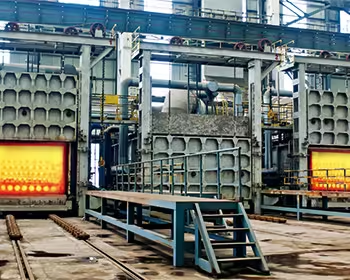
1018 Steel
- Not easily hardened by heat treatment due to low carbon content.
- Commonly used for case hardening (carburizing) to achieve a hard surface with a soft core.
4140 Steel
- Excellent response to quenching and tempering.
- Can achieve high hardness and wear resistance.
- Heat treatment process includes:
- Preheat: 400–600°F (200–315°C)
- Austenitize: 1550°F (845°C)
- Quench: Oil or polymer medium
- Temper: 400–1200°F (200–650°C) depending on desired hardness
Billet Relevance:
During billet heating, maintaining uniform temperature is essential — overheating can cause grain growth and surface cracking, especially in 4140 billets.
Machinability, Weldability, and Workability
Machinability
- 1018: Excellent machinability, ideal for precision turning and cold drawing.
- 4140: Moderate machinability; improves after annealing or normalizing.
Weldability
- 1018: Excellent, with minimal preheat.
- 4140: Requires preheat (150–260°C) and post-weld tempering to prevent cracking.
Formability
- 1018: Easily cold-formed or forged.
- 4140: Better suited for hot forming or forging due to higher hardness.
In machining or fabrication, the 1018 vs 4140 steel choice depends on whether you prioritize ease of processing or final performance.
Cost, Availability, and Market Perspective
| Factor | 1018 | 4140 |
|---|---|---|
| Cost | Lower | Higher |
| Availability | Widely stocked | Available but less common |
| Processing Cost | Low | Higher (due to heat treatment) |
4140 steel billets undergo tighter alloy and quality control, contributing to the price difference. However, their superior performance justifies the cost for demanding applications.
Typical Applications and Selection Guide
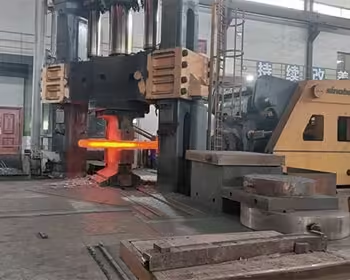
Common Uses
| Application | Preferred Steel | Reason |
|---|---|---|
| Shafts, Pins, Fasteners | 1018 | Cost-effective, ductile |
| Gears, Axles, Crankshafts | 4140 | High strength & wear resistance |
| Welded Frames & Structures | 1018 | Excellent weldability |
| Tools & Dies | 4140 | Hardenable and durable |
How to Choose Between 1018 and 4140
Ask these simple questions:
- Do I need weldability and cost savings? → Go with 1018
- Do I need strength, fatigue resistance, and durability? → Choose 4140
- Am I processing steel billets in-house? → 4140 billets may offer better post-forging performance.
Conclusion
The 1018 vs 4140 steel comparison reveals a clear trade-off between cost, strength, and processability.
| Category | 1018 Steel | 4140 Steel |
|---|---|---|
| Type | Low-carbon mild steel | Chromium-molybdenum alloy steel |
| Strength | Moderate | High |
| Machinability | Excellent | Moderate |
| Weldability | Excellent | Fair (requires preheat) |
| Heat Treatment | Limited | Excellent |
| Typical Form | Continuous-cast billets | Refined alloy billets |
| Applications | General engineering | Heavy-duty & high-stress parts |
In summary:
- Choose 1018 for economical, easily machined parts.
- Choose 4140 for high-performance, heat-treated, and wear-resistant components.
And remember — the quality of the steel billet is where the story of good steel truly begins.
And always remember — the story of 1018 vs 4140 steel begins with the billet. The cleaner and more consistent your billet, the stronger and more reliable your final product.
FAQ
Q1: What’s the main difference between 1018 and 4140 steel in practical use?
1018 is mild carbon steel suited for general machining and low-stress parts, while 4140 is an alloy steel ideal for high-stress, heat-treated components.
Q2: Can 1018 steel be heat treated like 4140?
Not effectively. 1018 can only be surface hardened (carburized), while 4140 can be fully hardened through quenching and tempering.
Q3: Is 4140 steel harder to machine than 1018?
Yes — due to higher hardness and alloying elements (Cr, Mo), 4140 requires tougher tooling and slower cutting speeds.
Q4: Are 4140 and 1018 steel billets different in production?
Absolutely. 4140 billets often require vacuum degassing and refined metallurgy for alloy uniformity, while 1018 billets are typically continuous-cast with less stringent controls.
Q5: Can I weld 4140 without preheating?
Not recommended. Preheating minimizes the risk of cracking from high carbon and alloy content.
Q6: Which steel resists wear better, 1018 or 4140?
4140 steel — its chromium and molybdenum content significantly enhance wear and fatigue resistance.
Q7: How do I know which one is magnetic?
Both are ferromagnetic, though magnetic permeability may vary slightly after heat treatment.

